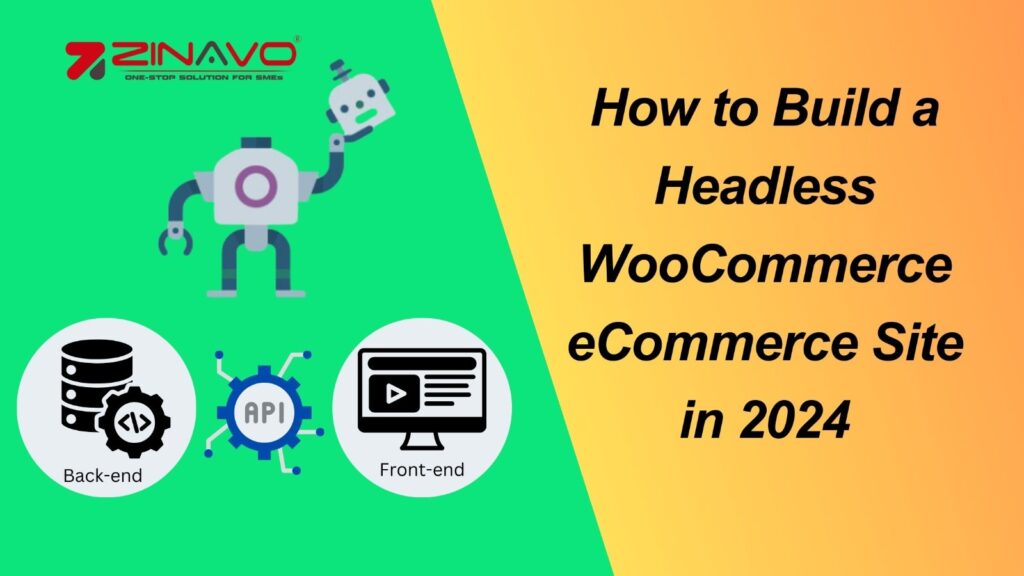Introduction
WooCommerce is a popular platform for building eCommerce sites. It’s a powerful and flexible platform that can be customized to meet your specific needs. However, if you want to take your WooCommerce site to the next level, you might want to consider building a headless eCommerce site.
Platforms typically used in constructing a Headless WooCommerce site
Before diving into the nitty-gritty of building a headless WooCommerce site, let’s grasp the concept of headless architecture. Unlike traditional eCommerce setups, where the backend and frontend are tightly integrated. But a headless eCommerce site is a site where the front-end and back-end are decoupled. This means that the front-end, which is what the user sees, is separate from the back-end, which is where the data is stored and processed. In simpler terms, the presentation layer (front-end) and the business logic layer (back-end) operate independently, communicating through APIs. This approach allows for greater flexibility and scalability, as well as improved performance.
Back-End (Commerce Logic):
WooCommerce with WordPress (Traditional Setup): WordPress is a widely used content management system (CMS), and WooCommerce is a popular eCommerce plugin for WordPress. In a traditional setup, WordPress handles both content and commerce logic.
Front-End (Presentation Layer):
React, Vue.js, or Angular (Front-End Frameworks): In a headless setup, you have the freedom to choose a modern JavaScript framework like React, Vue.js, or Angular for building the front-end. These frameworks offer enhanced interactivity and responsiveness.
Connecting Front-End and Back-End:
WooCommerce API: Regardless of the front-end technology chosen, the communication between the front-end and back-end is facilitated through the WooCommerce API. The API allows you to fetch product data, handle transactions, and maintain the essential eCommerce functionalities.
Guide to build a Headless WooCommerce Site
Choose a front-end framework: The first step is to choose a front-end framework that will be used to build the user interface. Some popular options include React, Angular, and Vue.js. Each framework has its own strengths and weaknesses, so it’s important to choose one that aligns with your goals and expertise.
Set up the back-end: Once you’ve chosen a front-end framework, you’ll need to set up the back-end. This involves installing WooCommerce and any necessary plugins, as well as configuring the site settings. You’ll also need to set up a REST API, which will allow the front-end to communicate with the back-end.
Build the front-end: With the back-end set up, you can start building the front-end. This involves creating the user interface using your chosen front-end framework. You’ll need to use the REST API to retrieve data from the back-end and display it on the front-end.
Test and optimize: Once the front-end is built, it’s important to test it thoroughly to ensure that it’s functioning as expected. You’ll also want to optimize the site for performance, which may involve using caching, optimizing images, and minimizing code.
Launch and maintain: Finally, you can launch your headless WooCommerce eCommerce site. However, the work doesn’t stop there. You’ll need to maintain the site, which involves monitoring performance, updating plugins and frameworks, and fixing any issues that arise.
Benefits of Headless WooCommerce
Flexibility: Choose the best technologies for your specific needs.
Performance: Optimize the user experience with faster load times.
Scalability: Scale components independently as your business grows.
Future-Proofing: Easily adapt to emerging technologies and trends.
Challenges
Potential Increased Costs: Initial setup costs may be higher, depending on the complexity of the architecture.
Complexity: Implementing and maintaining a headless architecture can be complex.
Conclusion:
Building a headless WooCommerce eCommerce site can be a great way to take your site to the next level. Decoupling the front-end and back-end will increase flexibility, scalability, and performance. With the right tools and expertise, you can build a headless eCommerce site that meets your specific needs and provides a great user experience. Choose the right platform, carefully implement the architecture, and weigh the benefits against the challenges. Embrace the headless revolution to create a unique and powerful shopping experience for your customers while positioning your business for long-term success in the dynamic world of eCommerce.



